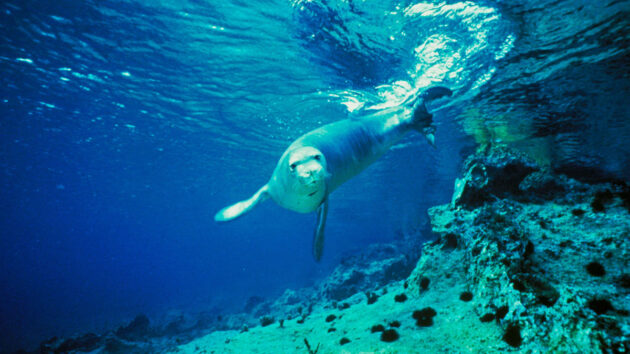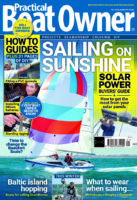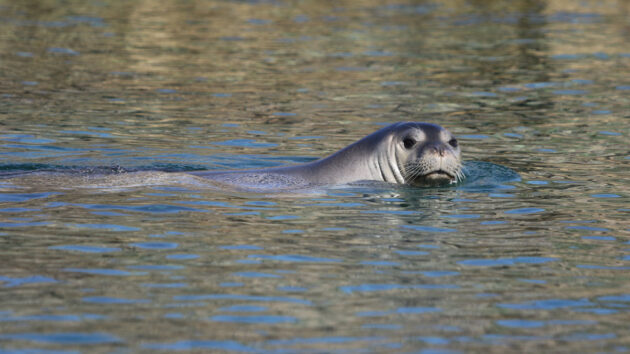Sailors visiting Greece can help protect one of the world's rarest seals by reporting sightings or checking and avoiding restricted breeding areas while cruising the Ionian or Aegean
Planning a sailing trip to Greece? Sailors are being encouraged to keep an eye out for the Mediterranean monk seal, one of the world’s rarest seals, and contribute to the protection of these charismatic mammals, writes Susan Smillie.
In the Ionian, a popular charter destination, there have been increased sightings of the Mediterranean monk seal (Monachus monachus) around Formicula island.
As a result, the islet has been shielded with restricted access zones ahead of high season. Details of the restrictions can be viewed on the iSea website.
Meanwhile, Seal Greece, a government-backed national campaign in collaboration with the Monk Seal Alliance, is asking boaters visiting the Aegean and Ionian seas to report sightings.
The Mediterranean monk seal is one of the world’s most endangered pinnipeds, with fewer than 1,000 left globally, almost half of them in Greece. Due to their low numbers, they are classified as vulnerable on the IUCN Red List.

The Mediterranean monk seal needs quiet coves and caves to rest and raise their pups, and is easily disturbed by human activity. Credit: imageBROKER.com/Alamy Stock Photo
Unregulated marine tourism has threatened this fragile population, as crowds of boaters descend on secluded Greek bays during summer’s pupping season.
Monk seals are especially sensitive, and human presence – from engine noise and anchor chains to drones and swimmers – can drive them from the quiet coves and caves they rely upon for rest and raising pups.
Worse still – the seals’ presence can draw camera-wielding tourists looking for a ‘seal experience’.
Researchers reported at least two occasions in which tourists entering a cave caused the separation of a pup from its mother. Neither pup was seen again.
Most sailors love a positive wildlife encounter – the highlight of any trip – and broadly, the sailing community has been keen to help, with the likes of Navionics and Navily updating charts and anchorages with restricted areas, charter companies and sailing clubs collaborating with local NGOs such as Tethys and iSea.
SealGreece is active on TikTok and has launched a mobile augmented reality (AR) experience, with great interactives for all ages, where you can check potential sailing grounds around Greece for breeding hotspots.
So it’s now much easier to avoid disturbing the animals (and attracting unwelcome fines in the process!).
The best trip is one without a close encounter, but if you spot a seal, don’t approach, keep noise and speed to a minimum, limit your distance (at least 30m) and viewing time – if you observe a change in the animal’s behaviour, move carefully away.
Approach secluded coves cautiously and avoid entering sea caves, which have become the seals’ last refuge.
Finally, sailors are being asked to share the animal’s picture and location only at www.mom.gr (or if spotted in the Ionian at Tethys), rather than the world at large, to avoid driving more crowds to seal hotspots.
UK cetaceans: How to spot and identify whales and dolphins from your boat
One spring day when I was a teenager, we were sailing across Poole Bay as we had many times before.…
Sailors and boaters asked to report basking shark sightings
The Shark Trust is asking for basking shark sightings to be reported to help understand more about the most heavily…
UK coastal birds: Your essential guide to waders, divers and fish eaters
When I was a child, my family’s boat lived on a mooring in Chichester harbour. At high tide we were…
UK seabirds: How to identify some of the most common breeds
Sailors have been watching seabirds for thousands of years. Early navigators in the Pacific used their knowledge of how far…
Want to read more articles like this?

A subscription to Practical Boat Owner magazine costs around 40% less than the cover price.
Print and digital editions are available through Magazines Direct – where you can also find the latest deals.
PBO is packed with information to help you get the most from boat ownership – whether sail or power.
-
-
-
- Take your DIY skills to the next level with trusted advice on boat maintenance and repairs
- Impartial, in-depth gear reviews
- Practical cruising tips for making the most of your time afloat
-
-
Follow us on Facebook, Instagram, TikTok and Twitter








